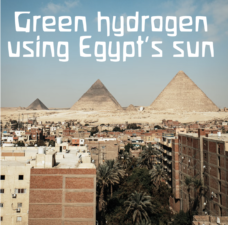 Piezoelectric crystal generators may one day power electric cars as well.
Piezoelectric crystal generators may one day power electric cars as well.
The infrastructure needed to provide power for Better Place and other types of electric cars may soon get a boost with a unique form of under-roadway generators being developed by the Innowattech Company and the Technion – Israel’s Institute of Technology.
The project being undertaken by these two entities is based on a pilot project involving specially designed crystal “generators” that are placed in strips under a ten km section of roadway of Israel’s Highway No. 4. Covered by the newspaper Haaretz as well as by Green Prophet, these under road generators are currently being used to provide electric power to road lighting and highway signs in Italy.
Piezo pizazz
The scientific term for generating electricity in this manner is piezoelectricity, which is defined as the charge which accumulates in certain solid materials, notably crystals, certain ceramics, and biological matter such as bone, DNA and various proteins in response to applied mechanical strain, i.e., vibrations caused by cars traveling on busy highways. In short, piezoelectricity means electricity resulting from pressure.
How piezoelectricity creates an electric charge through vibrations of various materials is not a new discovery, and has been known to the scientific world since the 19th Century. Innowattech wants to perfect their generators so that they will pick up energy vibrations of both road vehicles and trains, where the generators will be placed under railroad tracks in order to “harvest” the intense vibrations caused by trains as they pass over rails to which the generators have been attached.
Professor Haim Abramovich of the Faculty of Aerospace Engineering at the Technion believes that a stretch of road less than a mile long, four lanes wide, and trafficked by about 1,000 vehicles per hour can create about 0.4 Megawatts of power, enough to power 600 homes.
If electric power can be generated from either roadways or railroad tracks and then fed into power grids, why not a direct “feed” of generated electricity into the batteries of electric cars as they pass over these generators?
Better Place
Insofar as Israel is concerned, the Better Place company that will be developing the electric car infrastructure there, including a network of battery exchange stations, will be one of the major challenges to the eventual success of electric cars in this country, as well as in other locations. Better Place head Shai Agassi is presently considering a number of ways to provide adequate electricity for this infrastructure network, including building his own solar energy power plant and “Smart Grids” for exclusive use by Better Place.
Developing roadways with “strips” of piezoelectricity generators underneath is a big undertaking, however, and would involve having to close sections of highway while these generator strips are being installed. In addition, there is the need to be able to channel this energy either directly to the lithium ion batteries that provide the power to the car’s engine via generators installed in the cars, which will recharge the battery pack while the car is in motion.
Benjamin Franklin
Even if this direct energy method is not feasible, the idea to use under roadway generators to provide electricity for road lights, signs and for power grids is an excellent concept in itself, despite the infrastructure factors involved. All of these ideas are no more far fetched than those of early inventors such as Benjamin Franklin, who experimented with harnessing electrical currents from lightening by attaching a brass key to a kite string and then flying the kite during a thunderstorm.
While Franklin’s experiments didn’t actually create a usable electric current, it did lead to the development of the lightening rod which reduced or prevented damage to buildings by lightening. The idea of harnessing lightening to make electricity to power electric cars is another matter, however; we can leave that for another article altogether.
More articles on providing electricity for electric cars:
Better Place plans Use of Smart Grid to Power Electric Cars
Tamar Natural Gas Needs Fuel to Power Better Place Cars
Palestine’s First Solar Powered Electric Car
image via mskogly




That’s all the better reason his company should look into the possibility of using energy generated in this manner to fuel electric cars, Marie.
Shai Agassi is also a Technion IIT graduate. It must be existential threats that have really made Technion IIT people think of anticipating the problems of the future. Even outside of GTEP (The dynamic new Technion IIT alternative energy project), there is plenty going on in innovative, creative thinking to prevent the catastrophe of an energy crisis long before it comes. Here Shai Agassi (who founded Project Better Place) talks amazingly to Technion IIT students of today about taking responsibility for the problems of tommorrow. http://www.youtube.com/watch?v=CkEn9gsHIk